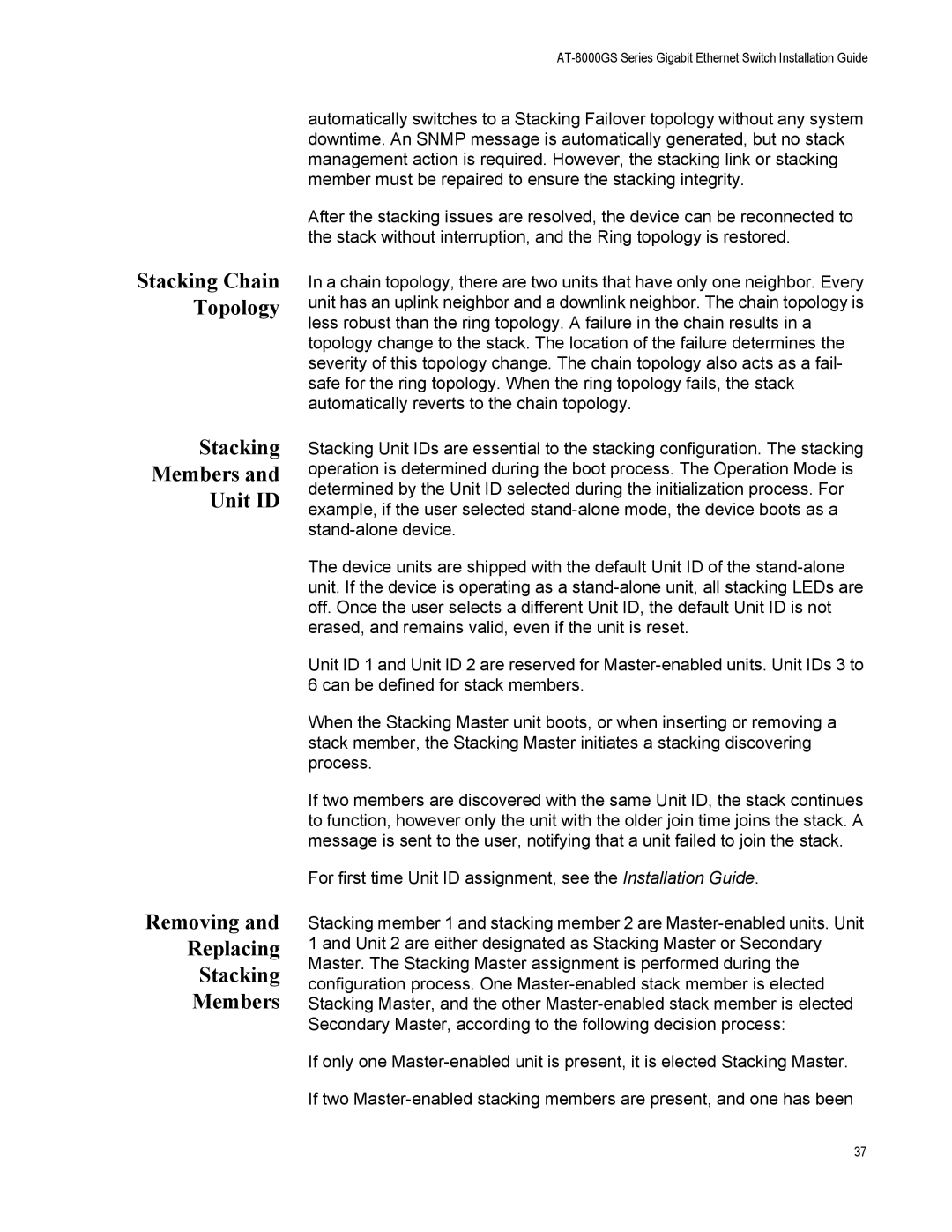Stacking Chain Topology
Stacking
Members and
Unit ID
Removing and
Replacing
Stacking
Members
AT-8000GS Series Gigabit Ethernet Switch Installation Guide
automatically switches to a Stacking Failover topology without any system downtime. An SNMP message is automatically generated, but no stack management action is required. However, the stacking link or stacking member must be repaired to ensure the stacking integrity.
After the stacking issues are resolved, the device can be reconnected to the stack without interruption, and the Ring topology is restored.
In a chain topology, there are two units that have only one neighbor. Every unit has an uplink neighbor and a downlink neighbor. The chain topology is less robust than the ring topology. A failure in the chain results in a topology change to the stack. The location of the failure determines the severity of this topology change. The chain topology also acts as a fail- safe for the ring topology. When the ring topology fails, the stack automatically reverts to the chain topology.
Stacking Unit IDs are essential to the stacking configuration. The stacking operation is determined during the boot process. The Operation Mode is determined by the Unit ID selected during the initialization process. For example, if the user selected
The device units are shipped with the default Unit ID of the
Unit ID 1 and Unit ID 2 are reserved for
When the Stacking Master unit boots, or when inserting or removing a stack member, the Stacking Master initiates a stacking discovering process.
If two members are discovered with the same Unit ID, the stack continues to function, however only the unit with the older join time joins the stack. A message is sent to the user, notifying that a unit failed to join the stack.
For first time Unit ID assignment, see the Installation Guide.
Stacking member 1 and stacking member 2 are
If only one
If two
37
